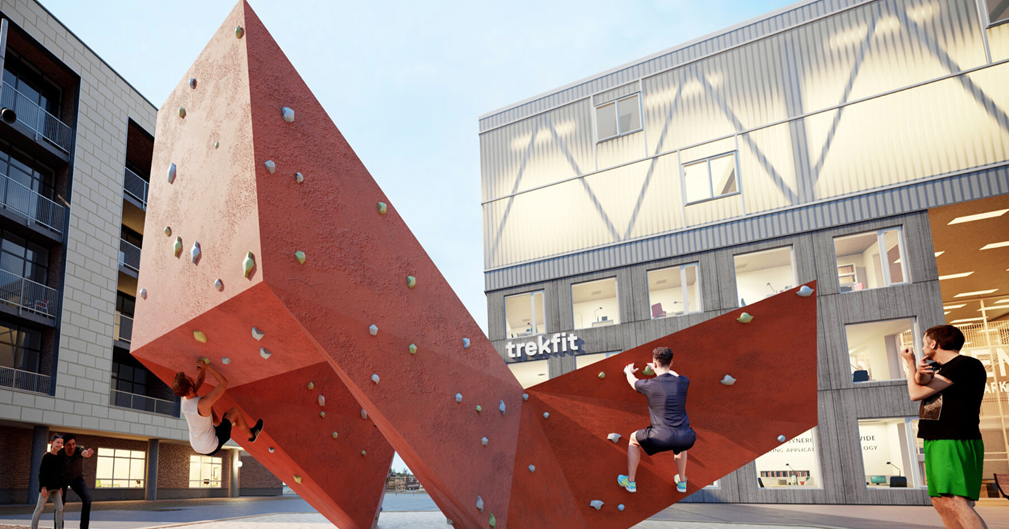The climbing world has experienced considerable growth in recent years, with the appearance of new types of structures and spaces designed for the practice of these sports. Two of the most popular elements in this area are play boulders and urban boulders, which, while sharing similarities, have significant differences in design, purpose, and location. Below are some of the differences between these two types of structures.
Play boulders and urban boulders
Play boulders are climbing structures designed for parks, recreational areas, and outdoor spaces. They are often brightly colored and shaped, with holds of different sizes and shapes that offer a variety of challenges for climbers of all levels. Play boulders are designed to encourage fun, adventure, and outdoor fitness and are ideal for children, families, and beginner climbers who want to enjoy climbing in a safe, natural environment.
Urban boulders, on the other hand, are climbing structures found in urban environments, such as public parks, squares, and recreational spaces. These boulders have a more minimalist and functional design, with holds and grips that mimic the characteristics of natural rock to offer a technical challenge to urban climbers. Urban boulders are ideal for those who want to practice climbing in an urban and social environment and seek a close and accessible place to train and improve their skills.
Special design
Play boulders usually have a playful and colorful design, with shapes inspired by nature and fantastic elements that invite imagination and play. These structures are intended to be visually appealing and to create an atmosphere of outdoor fun and adventure. Urban boulders blend harmoniously into the urban environment with a design that respects the aesthetics and functionality of the public space. These structures have a more minimalist aesthetic, focused on technique and sports practice, with a more severe and specialized design, unlike the play boulders that seek to awaken children’s interest with creative and colorful designs.

Variety of Grips
Play boulders offer a variety of holds and grips of different sizes, shapes, and textures, allowing children to experience a wide range of climbing moves and techniques. Urban boulders offer technical challenges for more experienced climbers, with grips and holds that mimic the characteristics of natural rock and allow for the practice of complex and demanding moves. These structures are ideal for those looking to improve their strength, endurance, and technique in an urban and social environment.
Technique versus play
Urban boulders are often meeting points for the city’s climbing community, where experiences are shared, tips are exchanged, and camaraderie is fostered among climbing enthusiasts. These structures are dynamic and vibrant places that promote climbing as an active and healthy lifestyle in the city. Play boulders stimulate play, offer a friendly introduction to climbing, and are ideal for providing children with a fun and challenging outdoor experience.
A climbing experience for everyone
Both play and urban boulders offer a unique and enriching experience for climbing enthusiasts, each with specific features and benefits. Play boulders offer fun and adventure in the open air, allowing children to get started climbing or exercising outdoors dynamically and entertainingly. In contrast, urban boulders stand out for their challenges. Both options, each with its particularities, are outstanding ways to practice climbing in controlled and safe environments.
What did you think of this topic? Do you want to know more about Urban or Play Boulders?
If you want Boulders for your project, playground, community, school, or public park, visit the following link to contact us.